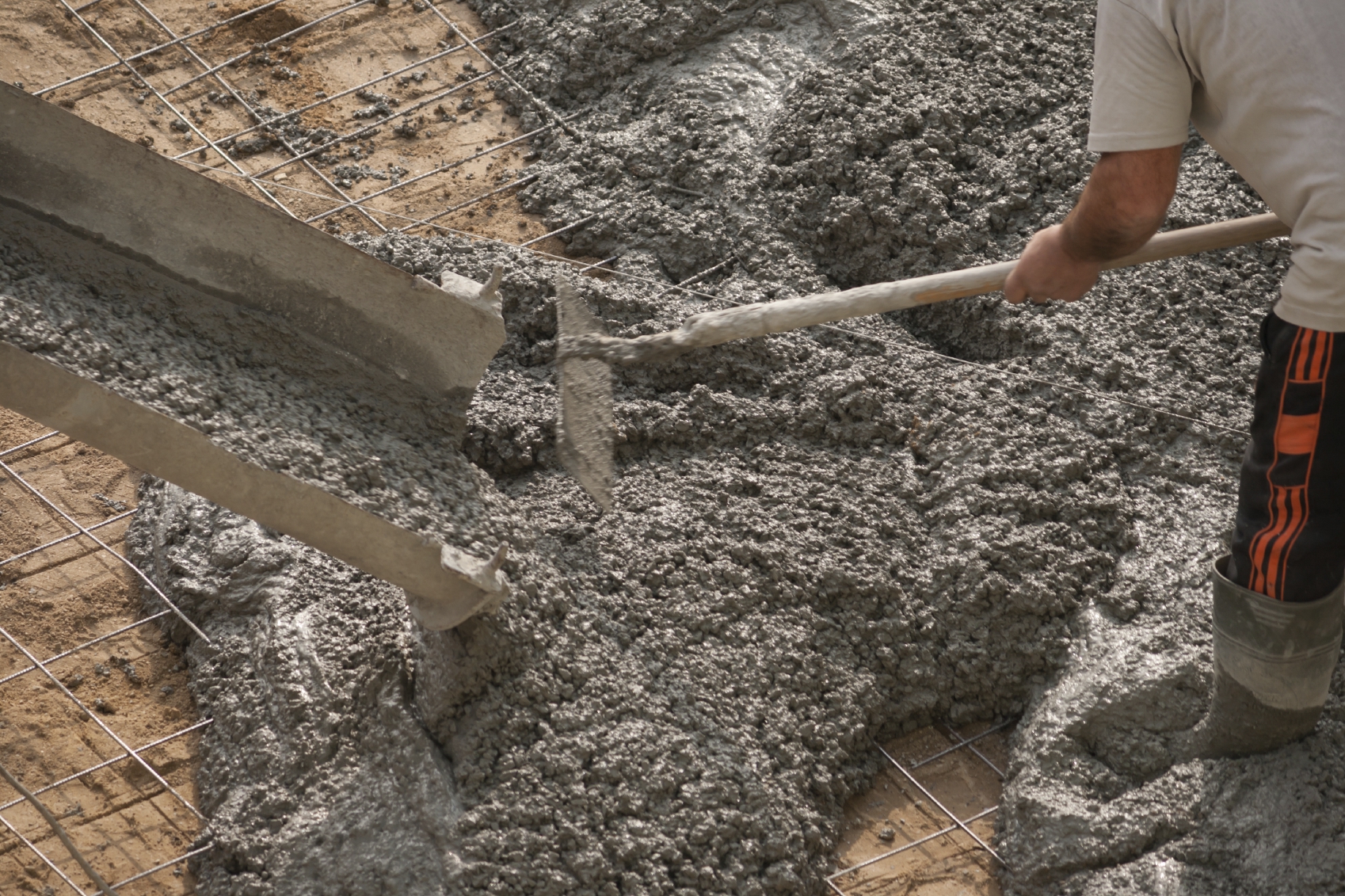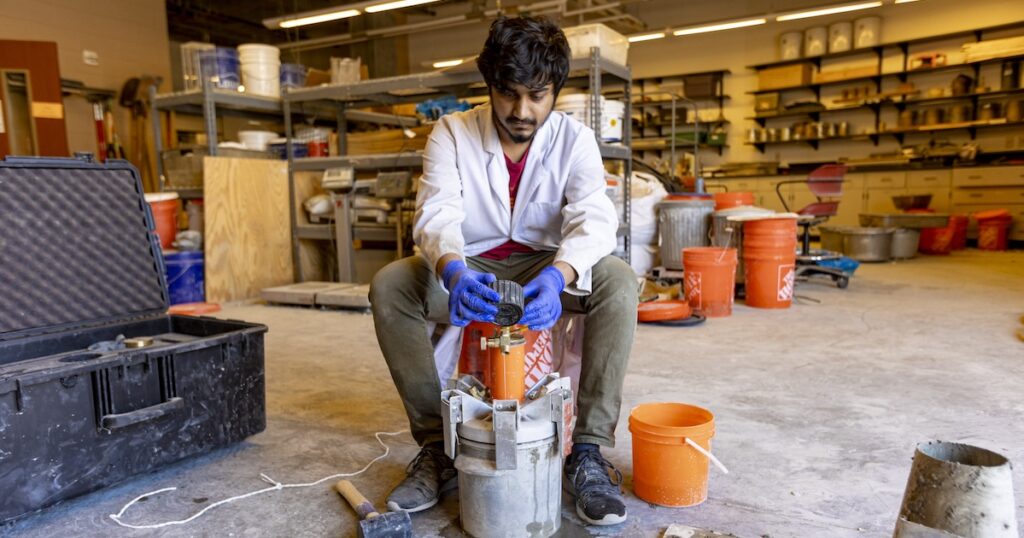Recognizing the Different Applications of General Engineering Concrete in Diverse Industries
When you take into consideration the many methods basic engineering concrete influences various sectors, you'll locate its applications are both broad and important. From providing durable structures for transportation networks to supporting innovative energy options, this product plays a vital role fit our infrastructure. What about its impact on city development and environmental design? Checking out these elements can reveal a lot more than you might expect.
The Duty of Concrete in Building And Construction and Structure Projects
Concrete plays a necessary duty in construction and building tasks, comprising around 70% of all products used in contemporary frameworks. You'll find it in foundations, walls, and floorings, offering toughness and durability. When you choose concrete, you're opting for a product that can stand up to weather, stand up to fire, and support hefty loads. Its flexibility permits various applications, from residential homes to imposing skyscrapers.Mixing concrete with ingredients can enhance its homes, enhancing workability and setting times. You can additionally mold and mildew it into various forms, permitting creativity in design. As you service your jobs, take into consideration the ecological benefits of using concrete, such as its capacity to reduce energy consumption in buildings. Overall, concrete's integrity and versatility make it a keystone of the building and construction market, making certain that frameworks are not just useful however additionally risk-free and durable.
Facilities Development: Roadways, Bridges, and Passages
When it involves framework growth, roads, bridges, and passages are important components that link communities and assist in transport. You depend on these frameworks daily, whether you're travelling to work or traveling fars away. General design concrete plays an essential function in their building and durability. Its strength and convenience permit designers to create durable streets that withstand rush hour and rough weather conditions.Bridges, typically covering rivers and valleys, need specifically developed concrete to guarantee safety and long life. The usage of enhanced concrete in tunnel building not only supports considerable weight but likewise enhances resistance against water infiltration and ground movement.

Concrete in Transport: Enhancing Mobility and Security
As you navigate with busy cities and country roads, the duty of concrete in transportation comes to be noticeable, greatly boosting both mobility and safety. Concrete's resilience guarantees that roadways, runways, and bridges endure rush hour and harsh climate condition. This long life decreases the need for frequent fixings, maintaining your trips smooth and reliable.In enhancement, the design flexibility of concrete allows for ingenious structures like overpasses and tunnels, which successfully lower congestion and boost web traffic circulation. You'll observe that concrete surfaces also provide much better traction, reducing the chance of crashes in wet conditions.Moreover, using concrete in railways aids preserve stability and safety for trains, making your trips much more reliable. Generally, concrete's contributions to transport not only boost your flexibility yet likewise considerably boost public safety, reflecting its vital function in the facilities you depend upon day-to-day.

Energy Industry Applications: From Power Plants to Renewable Resource
In the power field, concrete plays a considerable role in the building and construction and operation of power plants and renewable resource installations. You'll discover it important for developing sturdy structures, supports, and containment structures that hold up against extreme problems. In thermal nuclear power plant, strengthened concrete structures assure safety and durability against heats and pressure. WCGE commercial concrete.When it involves renewable energy, concrete is vital for wind generator bases, solar panel installs, and hydroelectric dams. It offers the security required to harness power successfully. You might not recognize it, but the concrete made use of in these applications is particularly developed to satisfy details performance criteria, like longevity and resistance to environmental factors
Ingenious Concrete Solutions in Environmental Engineering

The Effect of Concrete on Urban Growth and Landscape Design
Concrete plays an essential function in shaping city development and landscaping, affecting everything from facilities sturdiness to visual allure. When you think about cityscapes, concrete structures like bridges, roadways, and structures come to mind, offering a strong structure for metropolitan life. You'll observe exactly how well-designed concrete paths and plazas enhance Your Domain Name public rooms, making them extra welcoming and functional.In landscape design, concrete offers convenience, making it possible for creative designs for patios, maintaining walls, and ornamental features. You can create distinct exterior areas that mix perfectly with nature while maintaining structural integrity. Furthermore, concrete's capacity to hold up against climate extremes guarantees long life, lowering the requirement for regular repair services.
Future Patterns and Developments as a whole Engineering Concrete
As metropolitan landscapes progress, the demand for ingenious concrete options is driving improvements generally engineering. You'll see patterns leaning towards green products and lasting practices. Researchers are concentrating on establishing high-performance concrete that decreases environmental impact without giving up strength.Next-gen additives and blends, like recycled accumulations and bio-based materials, are getting grip, improving longevity and reducing carbon impacts. Smart concrete technology is likewise arising, integrating sensing units that keep an eye on structural health in real-time, enabling positive maintenance.You might discover that 3D printing with concrete his response is ending up being more practical, allowing complex layouts and faster building and construction timelines. Furthermore, the combination of self-healing concrete is on the resource increase, ensuring durability and decreasing fixing prices.
Regularly Asked Questions
What Are the Ecological Influences of Concrete Manufacturing?
Concrete production generates substantial carbon discharges, consumes water, and depletes natural deposits. You can mitigate these effects by exploring lasting alternatives, maximizing mix designs, and integrating recycled materials to minimize your ecological footprint and improve sustainability.
How Does Concrete Compare to Other Building Materials?
Concrete's resilience and strength often outperform products like timber and steel. It's versatile, economical, and energy-efficient, but its ecological impact can be significant. You'll wish to evaluate these aspects when selecting structure materials.
What Are the Various Kinds Of Concrete Available?
There're a number of kinds of concrete available, including standard, reinforced, high-strength, light-weight, and decorative. Each kind serves particular objectives, so you can select the one that ideal fits your project's demands and needs.
How Is Concrete Recycled and Reused in Building?
You can reuse concrete by squashing it into aggregate, which you after that recycle in new building and construction tasks (West Coast GE Concrete contractors). This procedure reduces waste, reduces prices, and minimizes the ecological influence of sourcing brand-new materials for your builds
What Safety And Security Steps Are Required When Collaborating With Concrete?
When collaborating with concrete, you must use safety gear, like handwear covers and safety glasses, assurance appropriate air flow, and use risk-free lifting techniques. Constantly adhere to security guidelines to stop injuries and preserve a protected functioning environment.